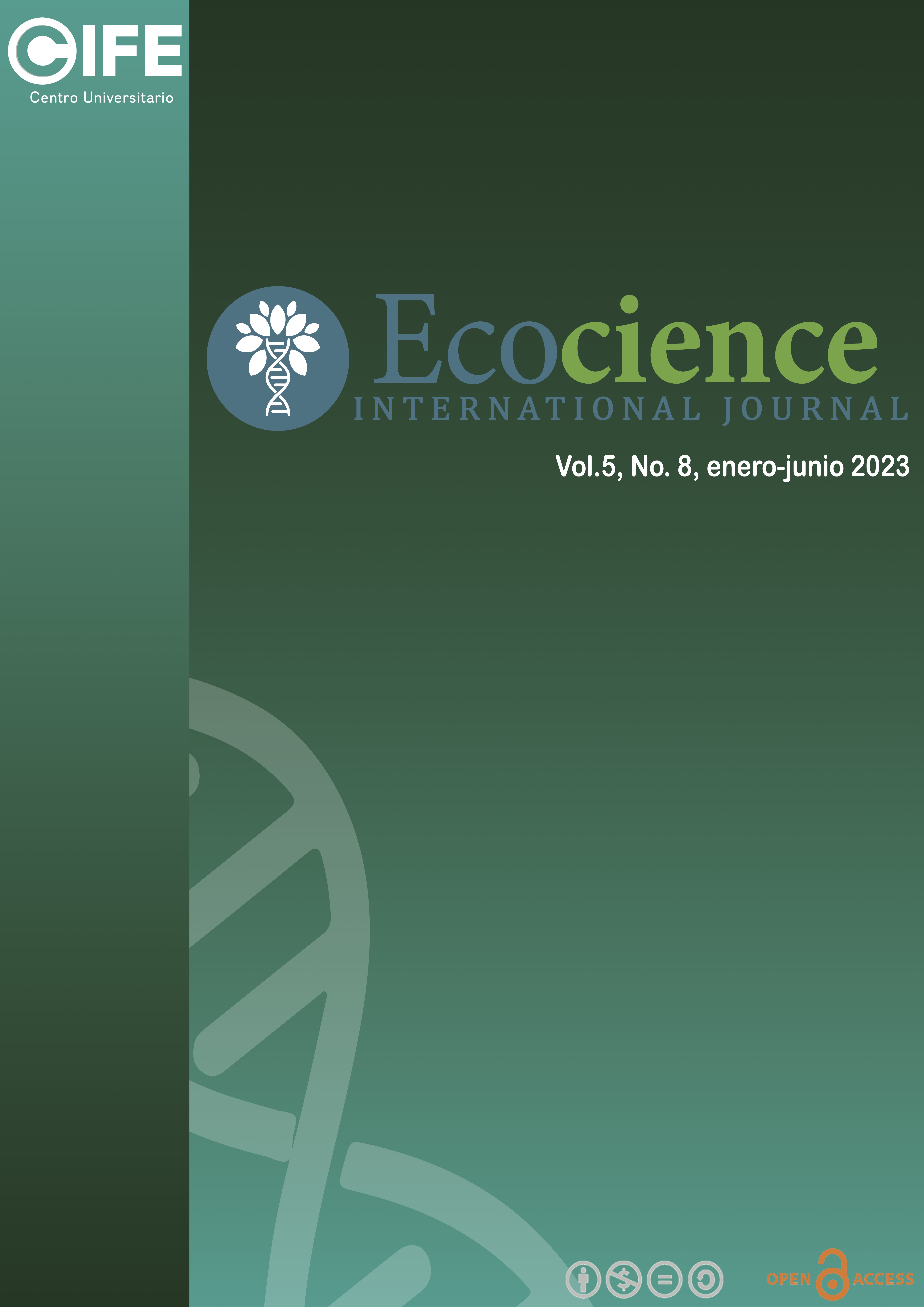Abstract
Influenza is a virus that infects the respiratory tract causing high mortality rates. Fruit peels are studied due to the amount of phenolic compounds (PC) found with positive health functions. Abundant evidence has been provided on the great potential of PC against different viruses that cause widespread health problems. These actions depend on the hydroxylation, methoxylation and alkylation of several components of the polyphenolic ring. Quercetin, gallic acid, epigallocatechin, catechin are some PC that have been tested for their activity against influenza virus, blocking entry into host cells, inhibiting virus multiplication and protecting against superinfection. The wide variety of mechanisms of action of PC against viral infections could be applied as a treatment or prevention strategy; but at the same time, they could be used to produce natural antiviral drugs. The present work is a descriptive review focused on the potential antiviral properties of PC from fruit peel on influenza virus.
References
Bang, S., Li, W., Ha TKQ., Lee, C. (2018). Anti-influenza effect of the major flavonoids from Salvia plebian R.Br. via inhibition of influenza H1N1 virus neuraminidase. Natural Products Research, 32(10), 1224-1228. https://doi.org/10.1080/14786419.2017.1326042
Badshah, S.L., Faisal, S., Muhammad, A., Poulson, B.G., Emwas, A.H. and Jaremko, M. (2021). Antiviral activities of flavonoids. Biomedicine & Pharmacotherapy, 140, 111596. https://doi.org/10.1016/j.biopha.2021.111596
Czubak, J., Stolarczyk, K., Orzel, A., Fraczek, M., Zatonski, T. (2021). Comparison of the clinical differences between COVID-19, SARS, influenza, and the common cold: A systematic literature review. Advances in Clinical and Experimental Medicine, 30(1), 109-114. https://doi.org/10.17219/acem/129573
Jones, J.E., Le Sage V. and Lakdawala S.S. (2020). Viral and host heterogeneity and their effects on the viral life cycle. Nature Reviews Microbiology, 19, 272-282. https://doi.org/10.1038/s41579-020-00449-9
Kausar, S., Khan, F.S., Ur-Rehman, M.I.M. Akram, M., Riaz, M., Rasool, G., Khan, A.H., Saleem, I. and Shamin, S. (2021). A review: mechanism of action of antiviral drugs. International Journal of Immunopathology and Pharmacology, 35. https://doi.org/10.1177/20587384211002621
Krammer F., Smith G.J.D., Fouchier R.A.M., Peiris M., Kedzierska K., Doherty P.C., Palese P., Shaw M.L., Treanor, J., Webster R.G. and García-Sastre. (2018). Influenza. Nature Reviews Disease Primers, 4,3. https://doi.org/10.1038/s41572-018-0002-y
Kuzuhara, T., Iwai, H., Hatakeyama, D., Echigo, N. (2009). Green tea catechins inhibit the endonuclease activity of influenza A virus RNA polymerase. PLoS Currents. 1, https://doi.org/1052. 10.1371/currents.RRN1052
Lee, H.J., Lee, Y.N., Youn, H.N., Lee, D.H., Kwak, J.H., Seong, B.L., Lee, J.B., Park, S.Y., Choi, I.S. and Song, C.S. (2012). Anti-influenza virus activity of green tea by-products in vitro and efficacy against influenza virus infection in chicken. Poultry Science, 91(1), 66-73. https://doi.org/10.3382/ps.2011-01645
Medina, R.A. and García-Sastre, A. (2011). Influenza A viruses: new research developments. Nature Reviews Microbiology, 9, 590-603. https://doi.org/10.1038/nrmicro2613
Ninfali, P., Antonelli, A., Magnani, M. and Scarpa, E.S. (2020). Antiviral properties of flavonoids and delivery strategies. Nutrients, 12(9), 2534. https://doi.org/10.3390/nu12092534
Niño-Gutiérrez, N. S. (2021). Socioformación y distribución especial del COVID-19 en Guerrero, México en el primer semestre del 2020. En Luna-Nemecio, J. & Tobón, S. (coords). COVID-19: retos y oportunidades para la socioformación y el desarrollo social sostenible (pp. 201-228). Universidad Pablo de Olavide-CICSAHL-Kresearch. https://doi.org/10.35766/b.rosds.21.08
Niño-Gutiérrez, N. & Luna-Nemecio, J. (2021). Ciencia y educación en México en el contexto del COVID-19. Forhum International of Social Sciences and Humanities, 3(5), 6-12. https://doi.org/10.35766/j.forhum2021.03.05.0
Noda, T. (2011). Native Morphology of influenza virions. Frontiers in Microbiology, 2, 269. https://doi.org/10.3389/fmicb.2011.00269
Sadef, Y., Javed, T., Javed, R., Mahmood, A., Alwahibi, M.S., Elshikh, M.S., Abdel-Gawwa, M.R., Alhaji, J.H., Rasheed, R.A. (2022). Nutritional status, antioxidant activity and total phenolic content of different fruits and vegetables´s peels. PLoS One, 17(5), e0265566. https://doi.org/10.1371/journal.pone.0265566
Shie J.J. and Fang, J.M. (2019). Development of effective anti-influenza drugs: congeners and conjugates-a review. Journal of Biomedical Science, 26, 84. https://doi.org/10.1186/s12929-019-0567-0
Steinmann. J., Buer. J., Pietschmann. T., Steinmann. E. (2013). Anti-infective properties of epigallocatechin-3-gallate (EGCG), a component of green tea. British Journal of Pharmacology. 168,1059-1073. https://doi.org/10.1111/bph.12009
Swierczynska, P.B., Mirowska-Guzel, D.M. and Pindelska, E. (2022). Antiviral drugs in Influenza. International Journal of Environmental Research and Public Health, 19(5), 3018. https://doi.org/10.3390/ijerph19053018
Zhu, Z. Fodor, E. and Keown, J.R. (2023). A structural understanding of influenza virus genome replication. Trends in Microbiology, 31(3), 308-319. https://doi.org/10.1016/j.tim.2022.09.015
Zhu, Y., Yao, X., Long, J., Li, R., Liu, Y., Yang, Z. and Zheng, X. (2019). Fluorine-containing chrysin derivatives: synthesis and biological activity. Natural Product Communications,14(9). https://doi.org/10.1177/1934578X19878921

This work is licensed under a Creative Commons Attribution-NonCommercial-ShareAlike 4.0 International License.
Copyright (c) 2023 Gilberto Mercado Mercado, Delia Libier Hernández de la Rosa


